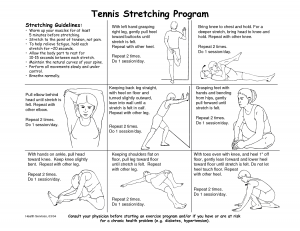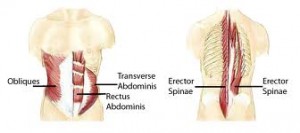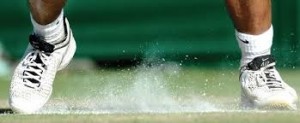I think of myself as someone who is very good shape, but I recently played a match in Mexico in 95 degree heat and high humidity. When I was finished, I’d consumed 64 ounces of water and was so sweaty that it looked like I’d just dunked myself in the ocean. Tennis can be an intense sport of quick starts and stops and matches can be long. Your game will be affected by how well you hydrate and fuel up before your match.
Below are some basic rules for hydrating before and after a big match.
-
Go juice: If you are exercising for more than 60 minutes, you need more than water to replenish sodium and potassium lost through sweat. The same fluid recommendations mentioned above apply to you: 17-20 ounces 2 hours prior to exercise; 7-10 ounces every 20 minutes during exercise and 16-24 ounces for every pound of body weight lost post exercise. Look for sports drinks that contain at least 5 percent of carbohydrates, but no more than 10 percent. Do not drink fruit juices of soda, which can cause diarrhea and intestinal cramping. My favorite fluid is Gatorade, which contains about 6 percent of carb concentration and 110 grams of sodium per 8 ounces.
-
Load up: Research shows that athletes exercising more than 90 minutes start to deplete their muscles’ energy stores. To boost energy level, make sure you consume about 2.7 grams of carbs per pound of body weight per day. The most important energy source is glycogen, found in carbs. Before exercise your snack should be low fat, low fiber and contain protein and carbs. For instance, half a bagel with peanut butter, crackers with cream cheese or a banana . After a workout, choose foods that are high on the glycemic index, because they empty into the blood stream quickly and begin the process of rebuilding muscle energy stores. It takes about 24 hours for your muscles to recover after a heavy workout and eating high carb foods can help. The best foods: pastas, bananas, orange juice, peanut butter, dried fruit, pancakes, or bagels.
-
Snack on the run: You’ll find that you hit a wall or bonk at some point when you begin to add distance or time onto your workout. For each person this will differ, depending on your energy stores and your metabolism. Follow the protocol above for eating before and after workouts to maintain your energy stores. You might also need to consume food on your run. I find it best to pick easy to digest, low-fiber foods that pack into my water belt or the pocket on my water bottle. I like animal crackers with peanut butter, mini energy bars and graham crackers. I suffer from a highly sensitive stomach and can not tolerate GU, but I know plenty of people who choose the pudding-like consistency energy supplement. The key is to try out several fuel sources prior to your race day. The best place for selection and variety is Sports Basement.
-
Know your caloric needs: Go to MyCalorieCounter.com and input your age, fitness level and weight. You can then calculate — based on your activity and speed at which you are working — your caloric expenditure for that activity. For instance, if you are running an average 10 minute mile for 90 minutes and you weigh about 130 pounds, you will burn 900 calories.
Jennifer Aquino is a running coach and fitness instructor. When she’s not chasing balls on the court, she’s running people through drills to help them improve their stamina. She teaches a Conditioning for Running Class on Wednesday nights through the City of San Mateo. She blogs at MothersontheRun.com.








